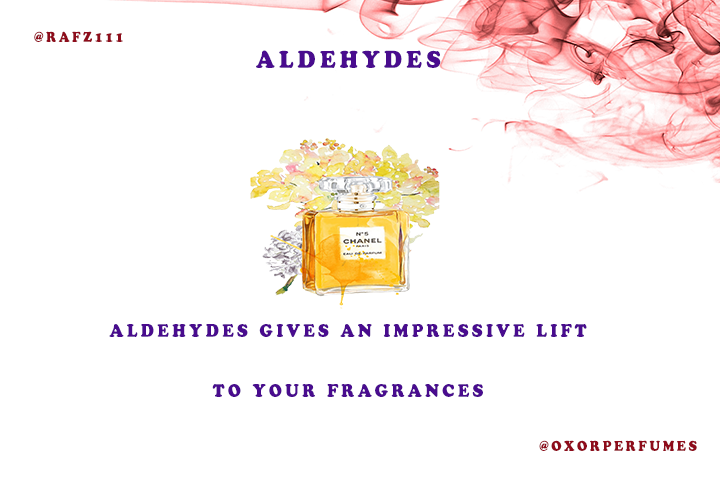why are aldehydes used in perfumes All about aldehydes
Aldehydes and Ketones are two of the most commonly known organic compounds. They both contain a carbonyl group, which makes them highly reactive and versatile. However, Aldehydes are more reactive than Ketones, and this has always been a topic of interest for chemists and researchers. In this post, we will explore the reasons behind this phenomenon and the practical applications of Aldehydes. The reason Aldehydes are more reactive than Ketones is due to the presence of an additional hydrogen atom in Aldehydes. The carbonyl group in Aldehydes has a hydrogen atom attached to it, whereas in Ketones, the carbonyl group is sandwiched between two carbon atoms. Due to the presence of an additional hydrogen atom, the electrons in the carbonyl group of Aldehydes are less stable, making them more prone to reactions. This instability leads to the formation of stronger bonds with other molecules, making Aldehydes highly reactive. The reactivity of Aldehydes has been extensively studied in the field of chemistry. They are widely used in the synthesis of other organic compounds, such as carboxylic acids, alcohols, and esters. Aldehydes are also commonly used in the production of perfumes, soaps, and other fragrant compounds. The strong and pungent odor of Aldehydes makes them an ideal candidate for use in perfumes. Speaking of perfumes, there are numerous options available in the market that contain Aldehydes. Some of the best perfumes with Aldehydes for women are Chanel No.5, Guerlain Shalimar, and Yves Saint Laurent’s Opium. These perfumes contain a unique blend of Aldehydes and other fragrant compounds, which gives them their distinctive scent. If you are looking for a perfume that is timeless, then Aldehyde-based fragrances are worth considering. Aldehydes can also be used in the production of pharmaceuticals and agrochemicals. They are instrumental in developing drugs used to treat Parkinson’s disease, Alzheimer’s disease, and other neurological disorders. Aldehydes are also used in the production of insecticides, pesticides, and herbicides. Their reactivity makes them useful in the synthesis of these compounds, which are designed to target specific pests and weeds. In conclusion, Aldehydes are versatile, highly reactive, and widely used in various industries. They are more reactive than Ketones due to the presence of an additional hydrogen atom, which makes them highly prone to reactions. Aldehydes are used in the synthesis of various organic compounds, perfumes, and pharmaceuticals. They are also used in the production of agrochemicals, such as insecticides, pesticides, and herbicides. The unique properties of Aldehydes make them a valuable component in the development of numerous chemical compounds that are used in our daily lives.
If you are looking for 7 Best Perfumes With Aldehydes For Her | Viora London you’ve came to the right place. We have 5 Images about 7 Best Perfumes With Aldehydes For Her | Viora London like 7 Best Perfumes With Aldehydes For Her | Viora London, why Aldehydes are more reactive than Ketones | Ketones, Electron and also 10 Best Aldehyde Perfumes of All Time. Read more:
7 Best Perfumes With Aldehydes For Her | Viora London
 vioralondon.comperfumes aldehydes
vioralondon.comperfumes aldehydes
Why Aldehydes Are More Reactive Than Ketones | Ketones, Electron
 www.pinterest.comnucleophilic ketones aldehydes reactive steric hindrance donating
www.pinterest.comnucleophilic ketones aldehydes reactive steric hindrance donating
10 Best Aldehyde Perfumes Of All Time
 www.fragrancex.comAldehydic Fragrance Gallery | Konika Aromas
www.fragrancex.comAldehydic Fragrance Gallery | Konika Aromas
 www.konikaaromas.comchimicamo equilibrio acido concentrazioni aldehydic costante esercizi svolti cromico stechiometria fragrances perfumery compounds chimica
www.konikaaromas.comchimicamo equilibrio acido concentrazioni aldehydic costante esercizi svolti cromico stechiometria fragrances perfumery compounds chimica
ALL ABOUT ALDEHYDES - Oxor Perfumes
 oxorperfumes.comaldehydes
oxorperfumes.comaldehydes
10 best aldehyde perfumes of all time. Why aldehydes are more reactive than ketones. Chimicamo equilibrio acido concentrazioni aldehydic costante esercizi svolti cromico stechiometria fragrances perfumery compounds chimica